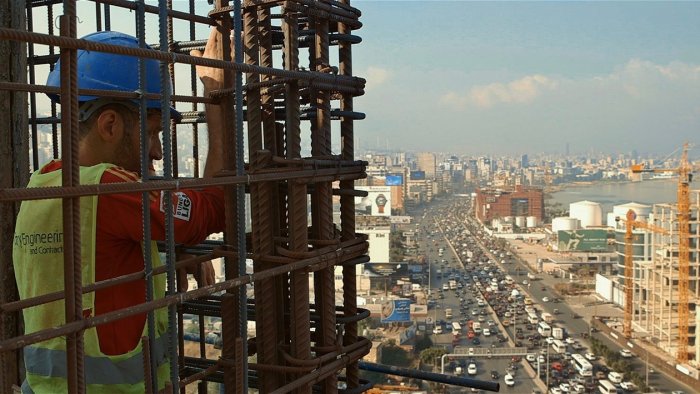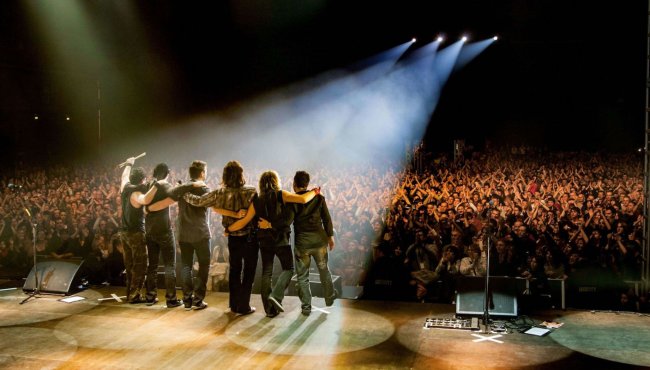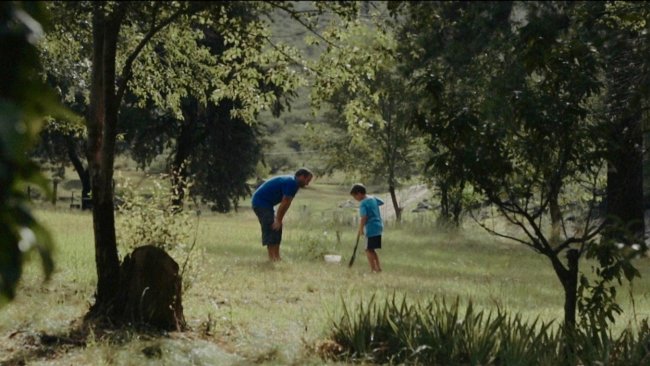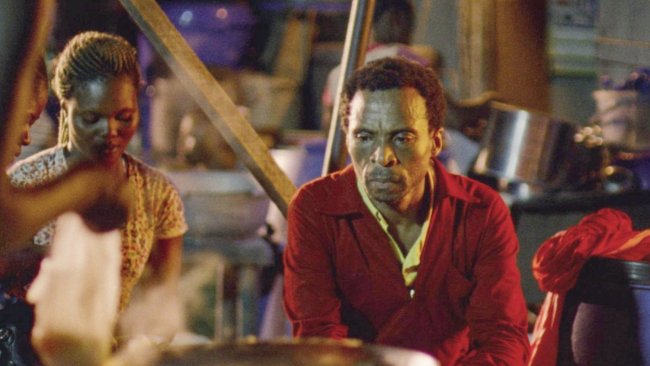Taste of Cement
[…] The beauty explicitly plays as a contrasting element to the workers’ suffering and creates a tension that constitutes the architrave of the entire film.
[…] In a sudden moment of silence during the screening in Nyon, one could hear the deep breathing of the spectators in the theatre: such a participation is exceptionally rare for a documentary film!
Text: Giuseppe Di Salvatore

Back and forth between Syria and Lebanon to build and rebuild houses: this is the story of a paradigmatic construction worker, told with a poetic voice-over. The destruction of the wars and the reconstruction of the times of peace are waves that coincide with the waves of foreign workers, which we could better call refugees under exploitation. Taste of Cement tells the story of Syrian construction workers in Lebanon, whose working places become prisons as the law forbids them from going out during the night and they are obliged to hide in the dark basement, which becomes an improvised shelter. We don’t see the ongoing war in Syria – save some footage showing the destruction of houses –, but we are shown the daily progress on a skyscraper being built in Beirut: up and down on a vertical axis that binds the underground with the sky, the prison with the panorama, and excludes the normal horizontal life of society. Ziad Kalthoum’s film is entirely constructed on this strange axis, from which we get amazing and beautiful images. The beauty explicitly plays as a contrasting element to the workers’ suffering and creates a tension that constitutes the architrave of the entire film. In this way, the risk of aestheticization is thwarted, as the beauty of the images is solely functional on the emotive layer focusing on the suffering of the workers.
Taste of Cement is a film entirely devoted to emotions, conceived completely from the point of view of the workers, and it concentrates more on their feelings than on objective facts. The acrobatic use of the camera assures its constant subjective presence for the spectator, and the highly expressive work on the sound assures our immersion into the inner space of the workers. Only their faces are shown, and their words have been gathered and are cited in the text told by the voice-over. Kalthoum’s intention is clearly to give them back their inner voices, the deep voices of their devastated souls – and to make us participate, empathically, in their suffering. In a sudden moment of silence during the screening in Nyon, one could hear the deep breathing of the spectators in the theatre: such a participation is exceptionally rare for a documentary film!
Taste of Cement is also a film that plays with several symbolic motives: a specific filmic geography is formed that conveys meaning and emotion. The vertical motive of the camera and of the movement on the skyscraper, which – as previously mentioned – gathers the horror of the prison and the beauty of the landscape, is doubled by the motive of the sea, figure of liberation and death. And through the water, and the rain, Kalthoum introduces the motive of the reflection: in the eyes of the workers and in the puddles, where we see how the ascending movement is inverted into a descending one. The reversibility of the movement resembles the figure of Sisyphus’ work of construction after destruction, which seems to prefigure another imminent destruction. With a filmic style in which the symbolic and the sensible tend to be conflated, Kalthoum introduces a dizzying sequence where the camera follows the circular movement of the cement in the concrete mixer on the truck. The deformation of the urban landscape compliments the breaking of the vertical axis that had structured the film. From the Sisyphian repetition to the dizzying despair: Taste of Cement reveals itself to be a hopeless filmic scream, with the force and the intensity of Edvard Munch’s The Scream.
This article contains a third-party video. If you would like to watch the video, please adjust your settings.
Watch
ONLINE STREAMING (Switzerland) by Filmexplorer’s Choice on eyelet.com
Info
Taste of Cement | Film | Ziad Kalthoum | DE-LBN-SYR-QAT-UAE 2017 | 85’ | Visions du Réel 2017 Nyon
Sesterce d’or (Compétition Internationale Longs Métrages) at Visions du réel 2017
First published: May 03, 2017



